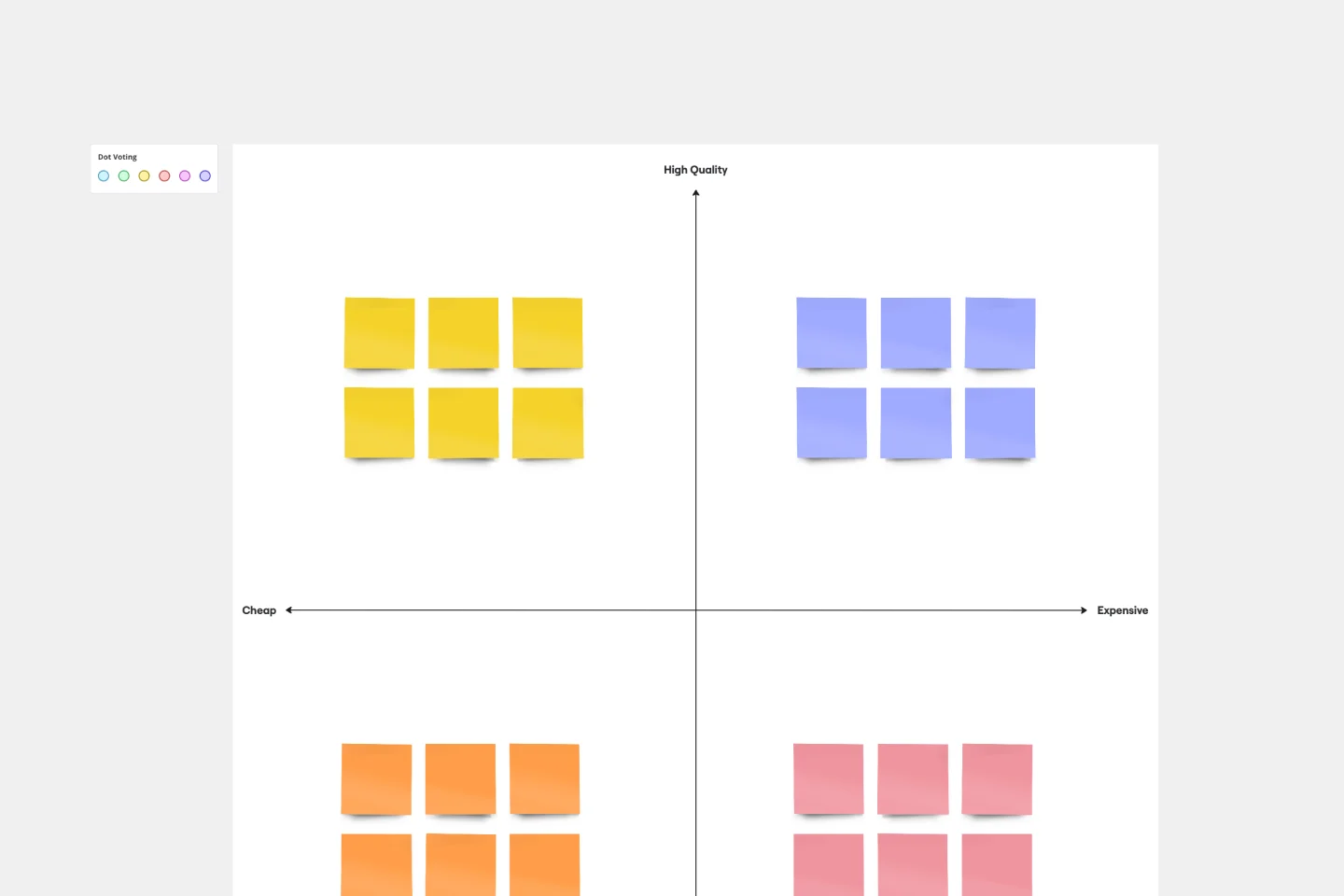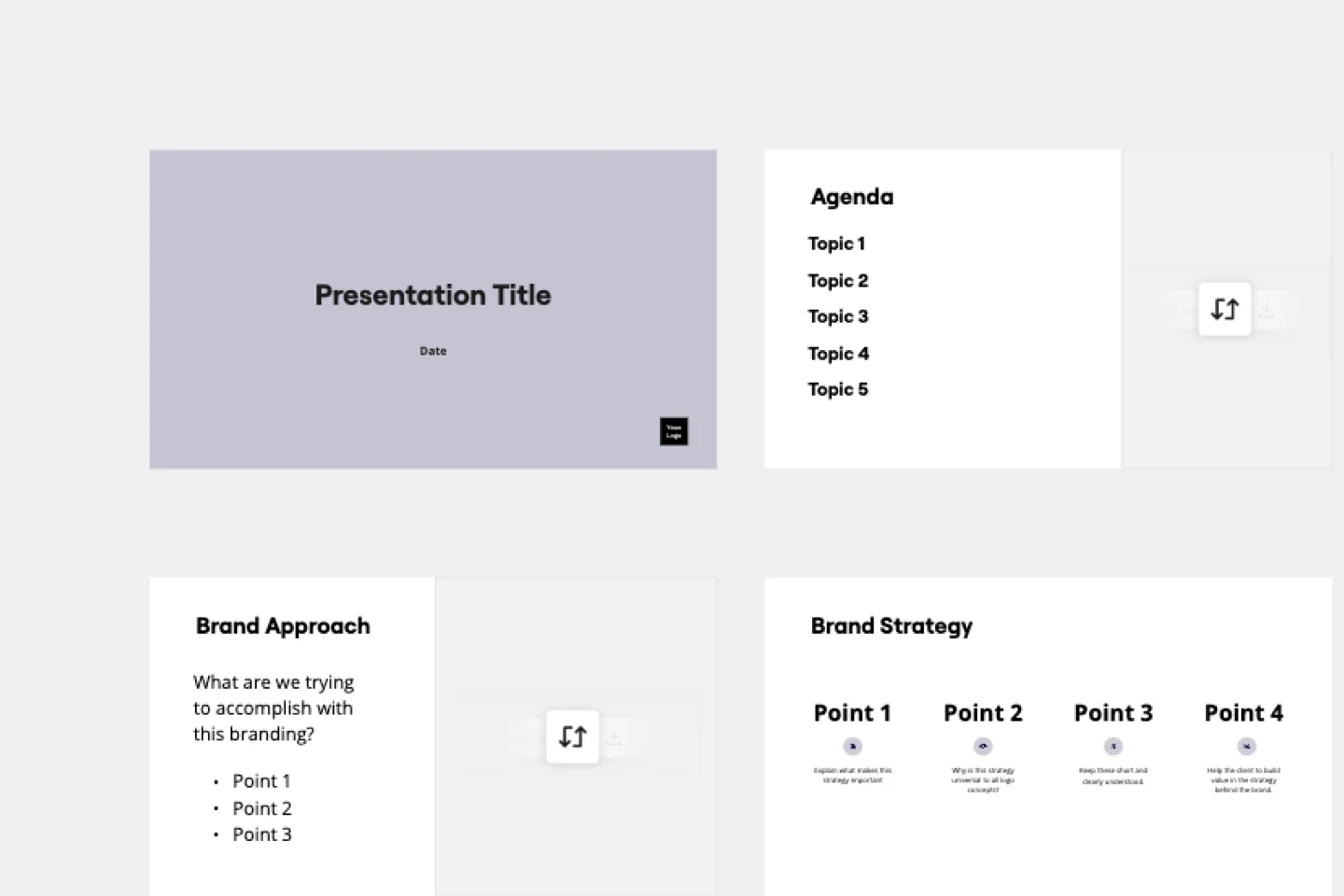About the Brand Guidelines Template
When you think of your favorite companies, what do they have in common? For most of us, our favorite companies are defined by winning brands. The best brands are unique and instantly recognizable. They have a clear voice that informs the look and feel of their website, products, and services, marketing copy, and even how problems are solved. But brands don’t appear out of thin air.
Every great brand starts with documenting its unique brand guidelines to ensure consistency across the entire organization. These guidelines help flesh out the components that give your business its unique character. Brand guidelines should be flexible so your designers can have room to play but rigid enough to make your brand easily recognizable. That's where Miro's brand guidelines template comes in handy.
When to use the brand guidelines template
There’s never a wrong time to figure out your brand guidelines. For new businesses, brand guidelines are crucial to ensure consistency, establish trust, and foster brand recognition.
But not only new businesses can benefit from established brand guidelines. Treat them like a living document, and revisit your brand guidelines any time your brand needs refreshing: when you’re pushing into a new market, rebranding the organization, growing your business, or pivoting your product offerings.
Create your own brand guidelines
Making your own brand guidelines is easy using our simple template. Get started by selecting the brand guidelines template, then take the following steps to make one of your own.
Articulate your brand story and positioning statements. Your brand story is the narrative stream that runs through all of your marketing materials. It helps your customers connect with your brand by taking them through a journey: how you got here, what problem your brand is solving, what motivates you, and what you hope to achieve.
Connect with your customers. Customers respond to brands on an emotional level. What emotions do you want your customers to feel when they interact with your brand? Does your brand inspire loyalty? Creativity? Excitement?
Study your competitors. What do their brands look like? Dig into their voice and tone; how they present their brand; and what their products, services, websites, and marketing materials look like. Your goal here isn’t to copy competitors but to keep in mind that potential customers will be consistently comparing you to similar businesses and seeing how you measure up.
Define your brand personality. Think of your brand as a person. What are they like? How would you describe them to your friends? This brand personality will permeate everything you create. Once you nail it down, you can choose colors, fonts, photos, or other visual elements that align with your personality. Miro makes it easy to collaborate on your brand’s visual characteristics. Share graphics, talk through ideas, and iterate as a team.
What is the purpose of brand guidelines?
The key purpose of brand guidelines is to define what makes your brand unique and ensure that this is communicated consistently, both internally to your audience, to establish trust and foster brand recognition. Brand guidelines act as a blueprint for anyone who must communicate your brand in their work and following these guidelines is crucial to protect and increase the value of your brand.

Miro
The AI Innovation Workspace
Miro brings teams and AI together to plan, co-create, and build the next big thing, faster. Miro empowers 100M+ users to flow from early discovery through final delivery on a shared, AI-first canvas. By embedding AI where teamwork happens, Miro breaks down silos, improves alignment, and accelerates innovation. With the canvas as the prompt, Miro’s AI capabilities keep teams in the flow of work, scale shifts in ways of working, and, ultimately, drive organization-wide transformation
Categories
Similar templates
Mood Board Template

Mood Board Template
When you’re kicking off a creative project, it’s sometimes important to communicate the mood you’re trying to evoke — but it’s so hard to do it with words. So create a mood board and use images, color palettes, textures, and typography. Mood boards are also perfect for gathering inspiration and sketching out and pitching ideas, and they’re not just for designers — your content writers, sales teams, and product teams can use them too, and this template makes it easy for all of you to get started.
Perceptual Map Template

Perceptual Map Template
To shape your messaging, tailor your marketing, improve your product, and build your brand, you have to know your customers’ perceptions — what they think of you and your competitors. You can gain those insights by exploring a perceptual map. This simple, powerful tool creates a visual representation of how customers rank your price, performance, safety, and reliability. Put this template to work and you’ll be able to size up your competition, see gaps in the market, and understand changes in customer behavior and purchasing decisions.
Voice of the Customer Template

Voice of the Customer Template
Identifying the voice of the customer is a crucial part of any customer experience strategy. Your Voice of Customer is simply a framework for understanding your customers’ needs, wants, preferences, and expectations as they interact with your brand. Evaluating your Voice of Customer allows you to dive into what your customers are thinking, feeling, and saying about your products and services, so you can build a better customer journey. Use the Voice of Customer template to record answers to key questions about your customer, including: What are they saying about our product? What do they need? How can we fulfill that need? And who is this persona?
Brand Positioning Template

Brand Positioning Template
The Brand Positioning Template is a valuable tool that helps businesses establish a strong market presence. It brings clarity and focus to a brand's identity and messaging by guiding users through a structured process. This ensures all aspects of a brand's positioning are aligned and thoughtfully considered. The Brand Positioning Template helps businesses articulate their unique value proposition, ensuring their messaging resonates effectively with their target audience and stands out.
Rebranding Presentation

Rebranding Presentation
Out with the old, in with the new! Showcase your brand’s newly revised strategy with this dynamic Rebranding Presentation Template.
Mood Board Template

Mood Board Template
When you’re kicking off a creative project, it’s sometimes important to communicate the mood you’re trying to evoke — but it’s so hard to do it with words. So create a mood board and use images, color palettes, textures, and typography. Mood boards are also perfect for gathering inspiration and sketching out and pitching ideas, and they’re not just for designers — your content writers, sales teams, and product teams can use them too, and this template makes it easy for all of you to get started.
Perceptual Map Template

Perceptual Map Template
To shape your messaging, tailor your marketing, improve your product, and build your brand, you have to know your customers’ perceptions — what they think of you and your competitors. You can gain those insights by exploring a perceptual map. This simple, powerful tool creates a visual representation of how customers rank your price, performance, safety, and reliability. Put this template to work and you’ll be able to size up your competition, see gaps in the market, and understand changes in customer behavior and purchasing decisions.
Voice of the Customer Template

Voice of the Customer Template
Identifying the voice of the customer is a crucial part of any customer experience strategy. Your Voice of Customer is simply a framework for understanding your customers’ needs, wants, preferences, and expectations as they interact with your brand. Evaluating your Voice of Customer allows you to dive into what your customers are thinking, feeling, and saying about your products and services, so you can build a better customer journey. Use the Voice of Customer template to record answers to key questions about your customer, including: What are they saying about our product? What do they need? How can we fulfill that need? And who is this persona?
Brand Positioning Template

Brand Positioning Template
The Brand Positioning Template is a valuable tool that helps businesses establish a strong market presence. It brings clarity and focus to a brand's identity and messaging by guiding users through a structured process. This ensures all aspects of a brand's positioning are aligned and thoughtfully considered. The Brand Positioning Template helps businesses articulate their unique value proposition, ensuring their messaging resonates effectively with their target audience and stands out.
Rebranding Presentation

Rebranding Presentation
Out with the old, in with the new! Showcase your brand’s newly revised strategy with this dynamic Rebranding Presentation Template.